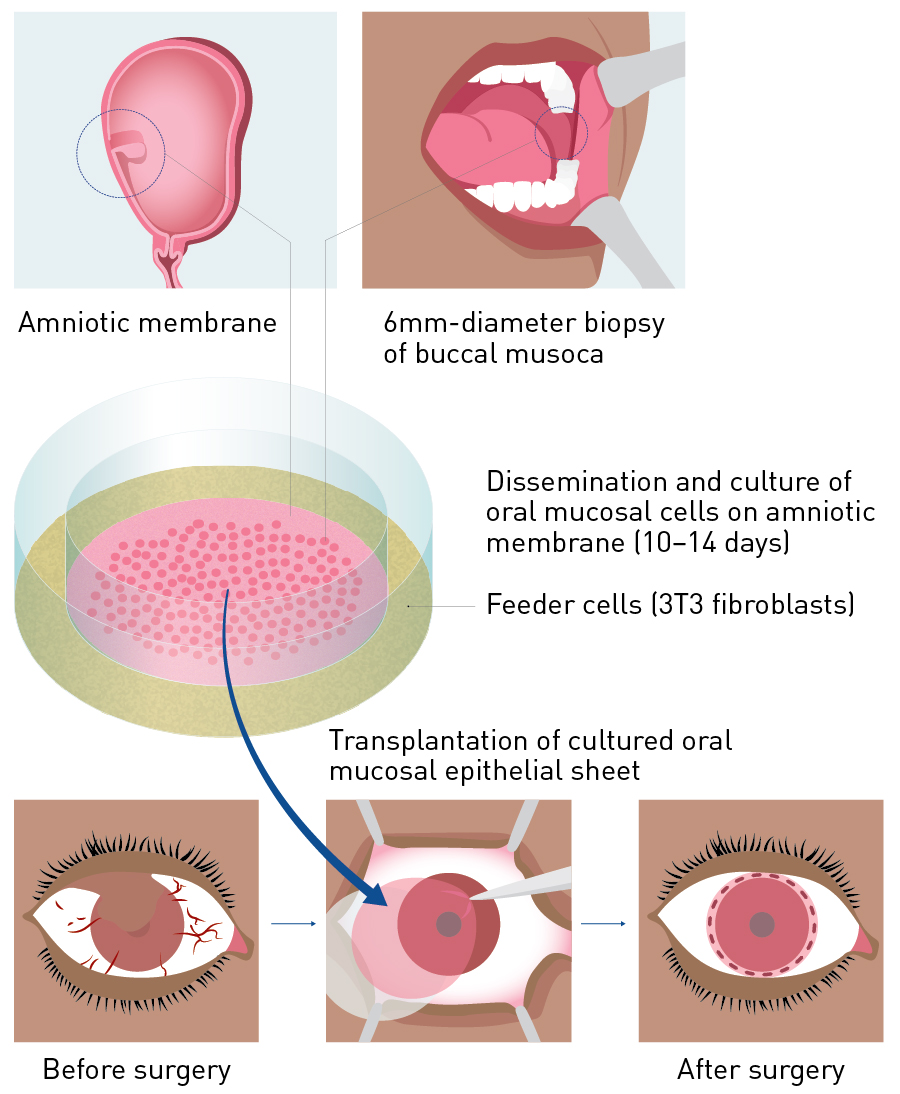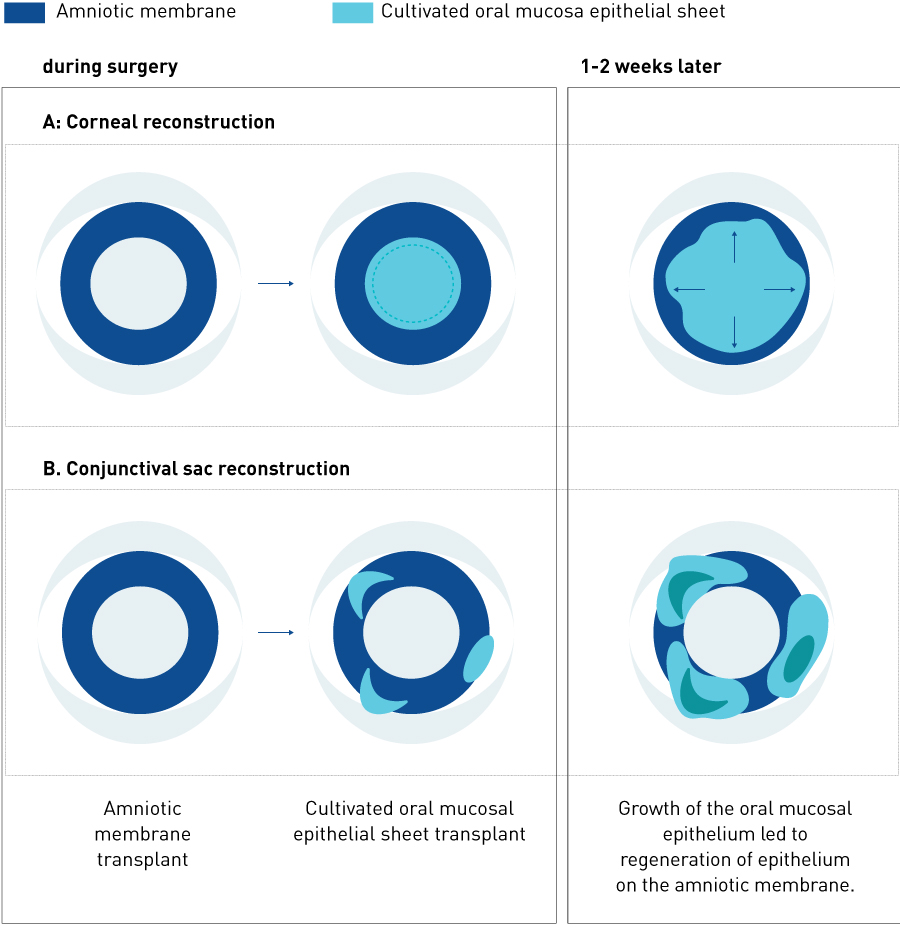Patients who have become blind due to damage to the surface of their eye may have their sight restored using cells cultivated from the inside of their mouths. Research into this phenomenon is described in the TRI publication Principles of Regenerative Medicine.
Two types of epithelial cells exist on the surface of the eye: corneal and conjunctival cells. The limbus is the name of the interface between them, and it is thought to generate stem cells that continually replenish the cornea. When the limbus is damaged by disease or injury, the cornea becomes overgrown with conjunctival epithelial cells, fibrous tissue and blood vessels. This results in scarring, inflammation and loss of vision.

From Ref. 41 © Kyoto Prefectural University of Medicine
Patients with damage to just one eye can receive a new sheet of corneal cells generated from the cornea of the other healthy eye. But to treat cases where disease affects both eyes, ophthalmologists from Kyoto Prefectural University of Medicine and co-workers have developed epithelial sheets derived from cells from the mucous membrane that lines the inside of the mouth.
Animal experiments confirmed that sheets of oral mucosa epithelial cells cultivated on an amniotic membrane could survive and expand and that they maintained corneal transparency when transplanted onto the surface of the eye.

These results prompted the world’s first successful transplantation of cultivated oral mucosal epithelial sheets in humans in 2002. A retrospective review of the progress made by researchers associated with the Translational Research Center for Medical Innovation (TRI) of 72 patients for the 6 years after the operation showed that their vision improved. Corneas had reduced scarring, epithelial layers appeared to undergo repair, and eye surface anatomy was improved. Results varied according to the underlying cause of the disorder: whether it was an autoimmune condition or thermal or chemical injury. Epithelial defect, which results in persistent inflammation and can lead to blindness, is generally resistant to all treatments, but all cases of persistent epithelial defect ultimately healed following transplantation.
A long-term clinical follow-up of 17 patients for more than 3 years showed that the epithelium was maintained on the eye surface over that time.
A prospective clinical study is now under way. The use of transplantation is expected to expand to include other conditions such as cancer, where it would allow a wider safety margin during tumor removal and rapid repair after surgery.




